An RV power converter may be one of those things we rarely think about, but without a working power converter, our RV life would be very different. In fact, our 12V power system would be pretty useless without a working power converter.
An RV power converter is a critical component of your electrical system, which is why it’s important to understand what it is – and what it does. And that’s what this post is all about. So let’s get right to it.
- 1) What Is an RV Power Converter?
- 2) What’s the Difference Between an RV Power Converter and RV Battery Charger?
- 3) What Do Charging Stages Mean?
- 4) What’s the Difference Between an RV Power Converter and an RV Inverter?
- 5) What Is an Inverter/Charger?
- 6) Do I Need an RV Power Converter Even When Connected to Shore Power?
- 7) I Have an Older RV – Should I Upgrade My Converter?
- 8) How Much Does an RV Power Converter Cost?
- 9) How Do I Know What Size RV Power Converter My RV Needs?
What Is an RV Power Converter?
An RV power converter takes the 120V AC power in your RV and converts it to 12V DC power. This accomplishes a couple of goals.
First, it allows your 12V RV batteries to be charged when plugged into shore power. Your batteries power the lights, vents, fans, and some other accessories whenever you’re off the grid, so it’s important to keep those batteries charged.
But, even if your rig is connected to shore power (or to a generator), you still need a converter for a couple of reasons.
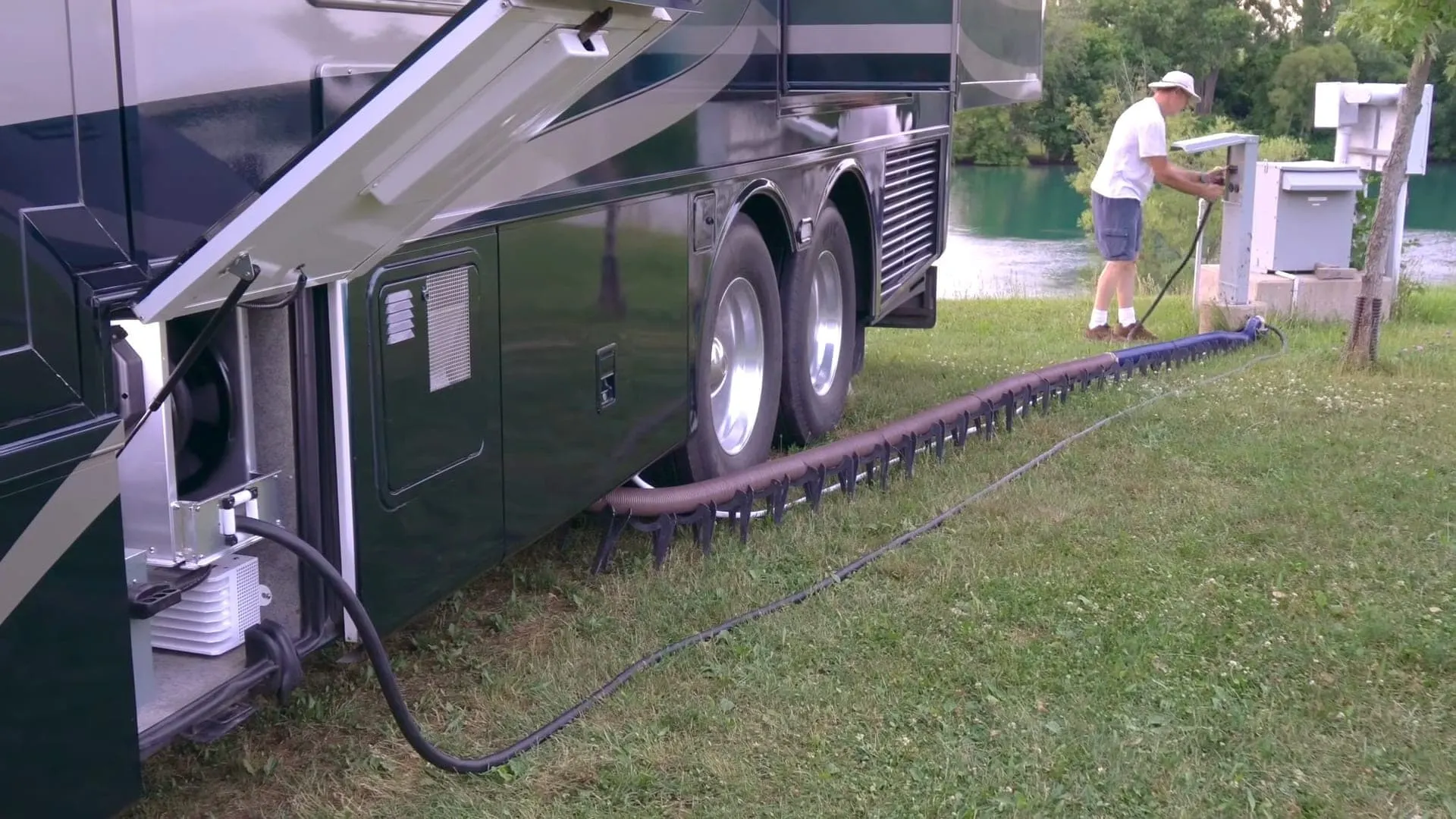
Even if you’re connected to shore power, you need a working power converter to power the 12V (DC) components in your RV, and to allow your batteries to charge!
First, the converter is still needed to recharge your coach battery(ies). In addition, even when you’re connected to another power source, your RV power converter is required to power all of the DC components throughout the RV.
When you plug your RV into any 120V AC electrical source (either shore power or a generator), the converter reduces the 120V AC power supply down to 12V… AND converts it from AC to DC power (hence the name of “converter”). From here, power is supplied to all 12V amenities and accessories throughout the RV.
So, if you’re planning on camping at a park with full hookups, you’d better have a working power converter or your coach batteries will drain and could be damaged in addition to not being able to power your DC components when you need them.
What’s the Difference Between an RV Power Converter and RV Battery Charger?
At their most basic, there’s no functional difference between an RV power converter and an RV battery charger. Both will convert AC power (shore power) to DC power. Both will also charge your RV’s batteries, and power 12V accessories and appliances. The difference between the converter and charger is primarily their ability to control their output voltage/amperage.
A converter supplies amperage at a fixed voltage (typically 13.6 volts), but the voltage is lowered if amperage/power demand is more than the converter is capable of supplying. A converter is capable of providing a slower charge rate than a charger, but if left connected for too long, could overcharge the batteries.
A battery charger, on the other hand, is capable of providing amperage at different voltages, contingent upon the battery’s state-of-charge. We’ll talk more about charging stages in just a bit.
It should be noted that there’s a significant difference between older converter/chargers and more modern ones. Older converters and chargers (often called “single-stage” chargers) will maintain your RV’s batteries while you’re plugged into shore power and they’ll charge your batteries relatively quickly if you’re running on generator power. But their efficiency is poor enough that they can damage your batteries under certain conditions, including being plugged into shore power for very long periods.
Newer converter/chargers are more up to the task – they do a better (and smarter) job of properly charging your batteries and providing the proper degree of charge, in stages.
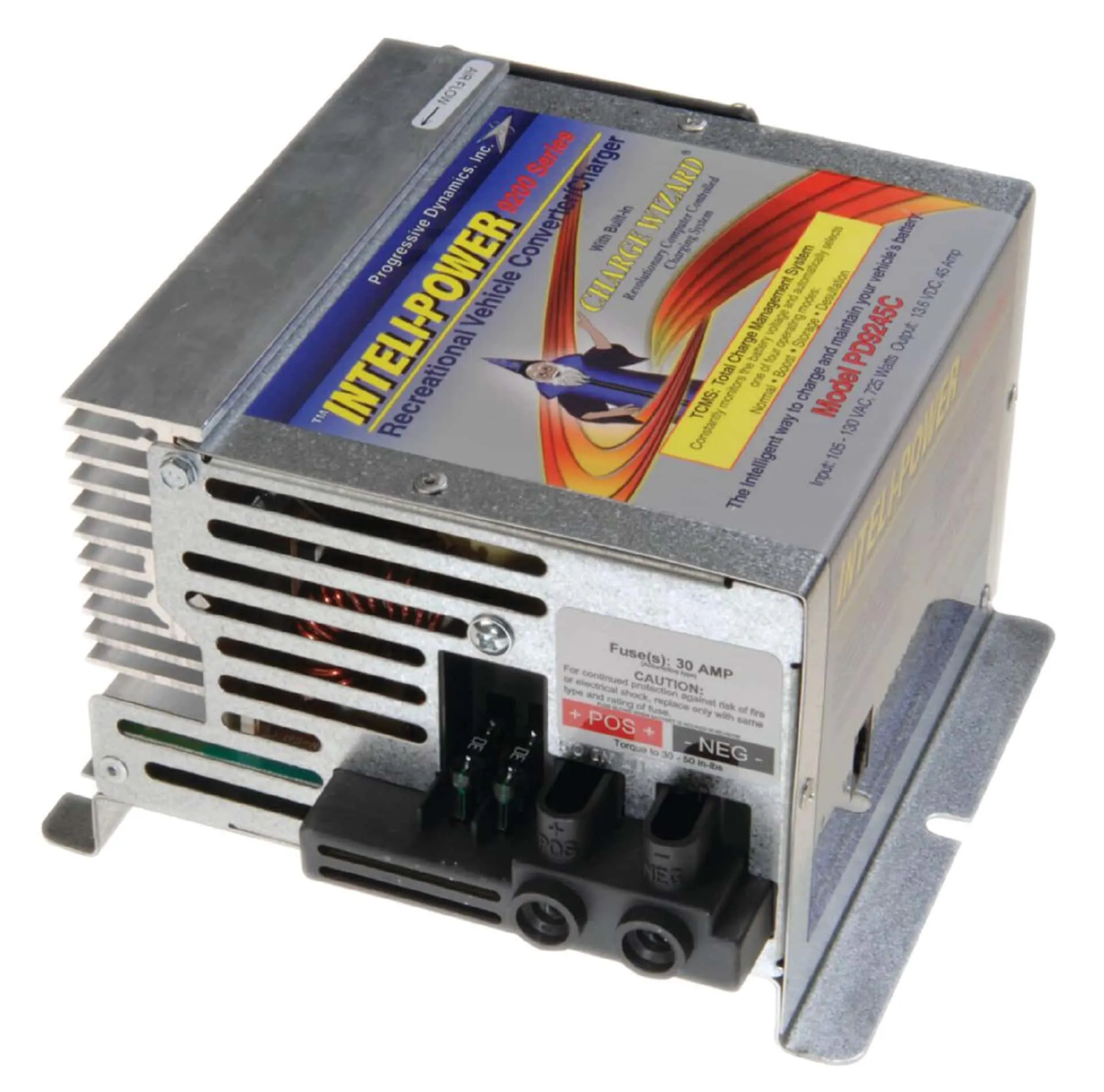
Newer converter/chargers are capable of charging your RV batteries better and smarter by providing the proper degree of charge, in stages. (Photo credit: Progressive Dynamics, Inc.)
In fact, newer battery technology demands the use of newer (smarter) chargers. This is true because lead-acid batteries degrade more quickly if left uncharged. However, lithium batteries degrade faster if kept FULLY charged. So, smart chargers need to provide just the right amount of power at the correct voltage. These days, some newer smart chargers allow the RVer to select the appropriate type of charging for the type of batteries they have, (flooded lead-acid, gel, AGM, or lithium), so proper charging takes place as it should.
Now let’s get back to the stages of charging…
What Do Charging Stages Mean?
A charger (or converter/charger) may offer 2-stage or 3-stage charging. The possible charging stages are (voltages are listed for standard 12V flooded lead-acid batteries, for example, purposes only):
- Bulk Charge: the first stage of charging in which a high voltage, high amperage charge is supplied to the battery(ies). This stage typically returns 70-80% of the depleted battery capacity. It ends when the battery voltage reaches approximately 14.6V
- Acceptance/Absorption Charge: once the bulk stage ends, that voltage (14.6V) is maintained while the charger slowly reduces the amperage being supplied. This stage returns the remaining 20-30% of depleted battery capacity and ends when the charging current has reduced to approximately 1% of the battery’s capacity (for instance, a 100 amp-hour battery would be fully charged when the absorption charge current is reduced to 1 amp)
- Float Charge: once the charging amperage drops to a defined target rate (typically down to 1% of the battery bank’s capacity), charging voltage is reduced (13.6V) to maintain the battery’s charge at 100% of its capacity.
2-stage charging is likely to be found in an older charger. These chargers will only offer bulk stage and float stage charging. When shore/generator power is supplied, a 2-stage charger will start out in bulk mode, supplying its maximum amperage until the battery’s voltage rises to its target set point (approximately 14.1 to 14.6 volts for flooded lead-acid batteries). Once that voltage is reached, the charging current is stopped and the battery voltage is allowed to drop to its “float” level (13.6 volts). The charger will supply current as needed to maintain the battery at 13.6 volts.
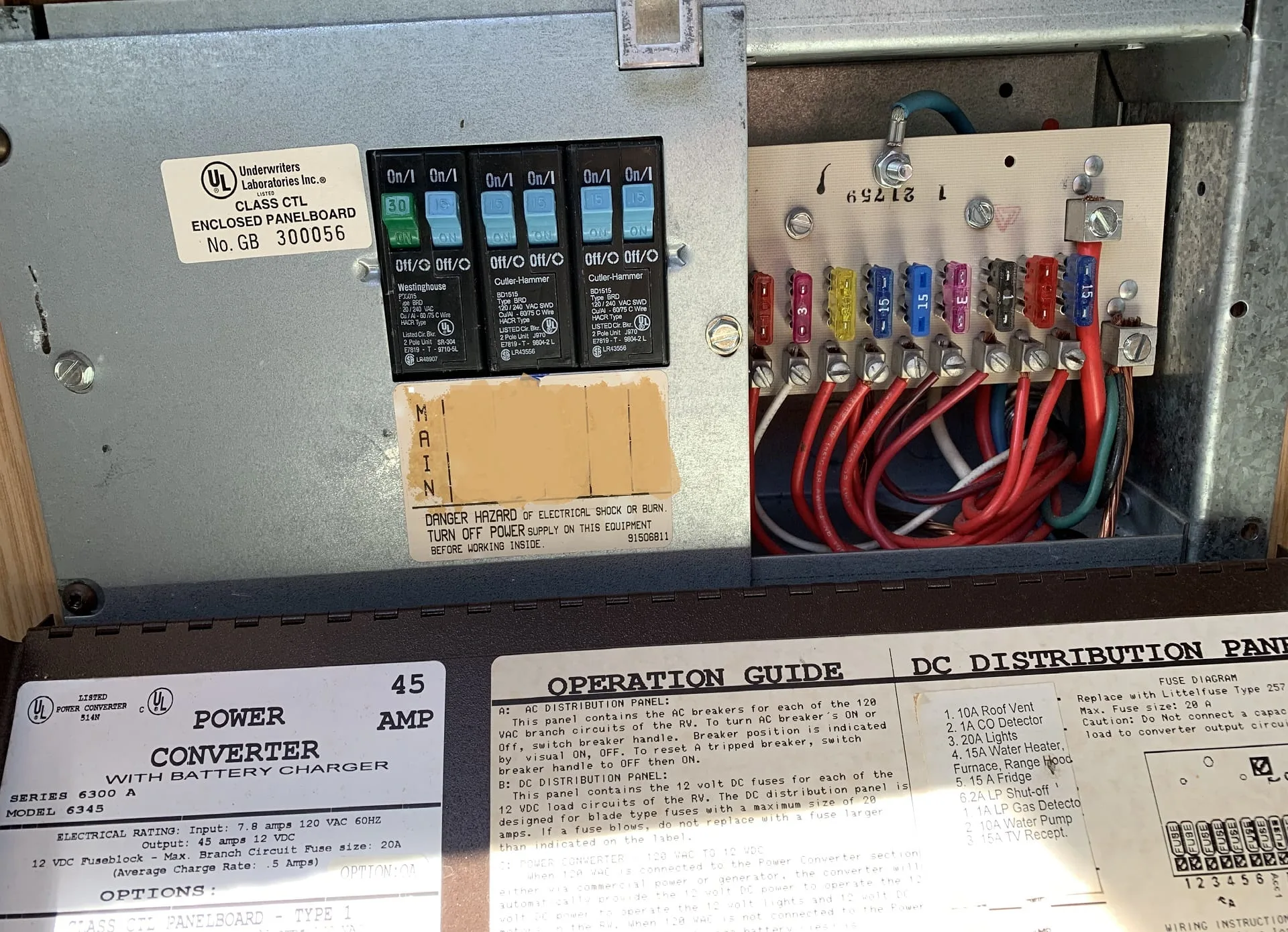
This is an older 2-stage RV converter charger. These chargers will only offer bulk stage and float stage charging.
2-Stage chargers never completely charge a battery to its full capacity, since bulk stage can only return about 80% of the depleted charge. And because 2-stage chargers are either not charging at all or supplying full amperage to the battery, they tend to boil off the water from the battery’s electrolyte solution. Both of these attributes tend to shorten the life of batteries and reduce their ability to supply power when off-grid.
In particular, the failure to completely charge the battery leads to a condition called “sulfation”. Batteries supply electricity through a chemical reaction. In the case of lead-acid batteries, that reaction involves sulfuric acid (in the liquid electrolyte) and lead (in the batteries plates) combining into lead sulfate.
As you discharge the battery, lead sulfate forms on the surface of the lead plates. Then, when you reverse the process by supplying power TO the battery, the chemical reaction is reversed. The incoming power splits the sulfur from the lead plates, returning the sulfur to the liquid electrolyte. If you fail to completely recharge the battery, lead sulfate will remain on the surface of the lead plates, reducing the battery’s ability to generate electricity… and ultimately shortening its usable lifespan.
A 3-stage charger offers charging in bulk, acceptance/absorption, and float stages. 3-stage chargers start out in bulk mode, just like a 2-stage charger does. However, once the battery voltage rises to its target level (14.1–14.6 volts), the charger will hold that voltage while slowly ramping the charging current down. This process, the acceptance/absorption stage, returns the battery to 100% full. Once the battery has charged fully, the voltage is reduced to float level (anywhere between 13.5 and 13.6 volts), and low current charging is supplied in order to maintain that voltage level. This helps to lengthen the battery’s lifespan and eliminates the potential for overcharging them.
This is why 3-stage charging is recommended by most lead-acid battery manufacturers as the best and most efficient way to recharge a battery back to full capacity while also extending battery life.
What’s the Difference Between an RV Power Converter and an RV Inverter?
You may recall from the beginning of this post that an RV power converter works by taking the 120V AC power in your RV and converting it to 12V DC power, allowing it to charge your house batteries and run the 12V accessories and appliances in your rig.
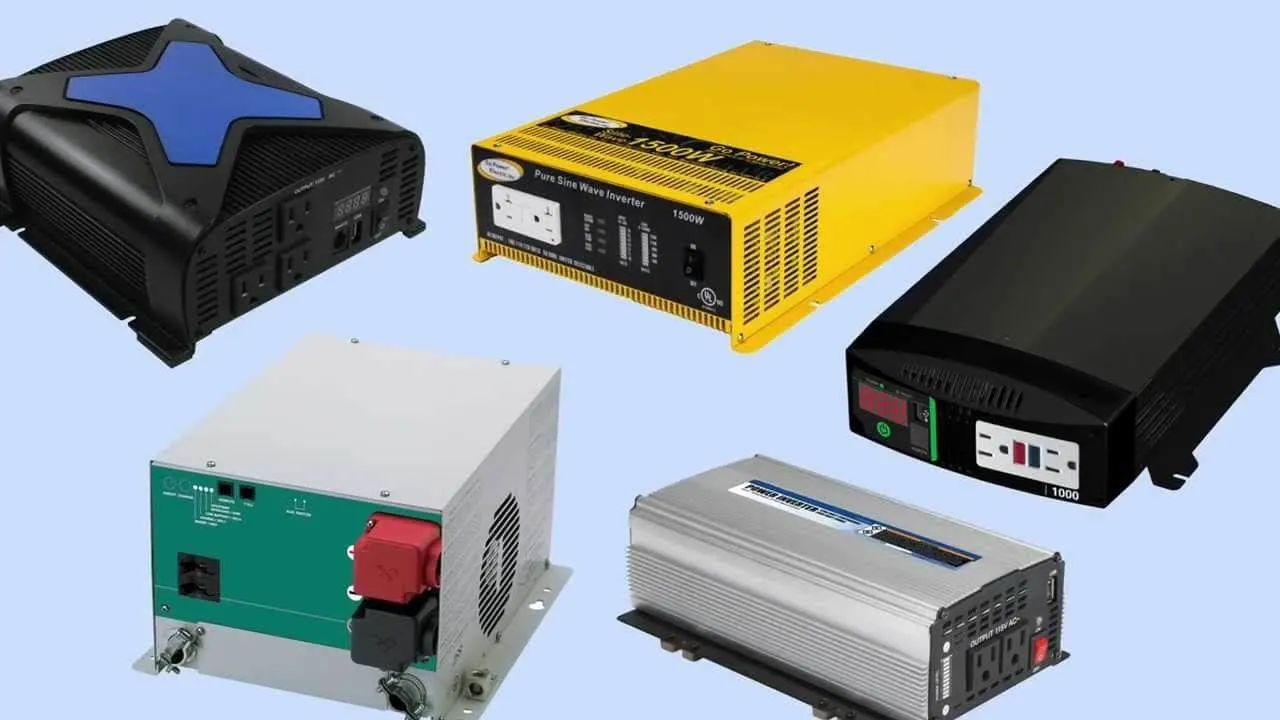
Here you see five different brands/types of inverters. An RV inverter is necessary to change the 12V DC power from your RV’s battery(ies) into 120V AC power for use with your devices/appliances that require it (TV, microwave, etc).
By contrast, an RV inverter does the reverse and takes 12V DC power in your rig and inverts it to 120V AC power for the purpose of running appliances that require it. 120V AC power is needed for items such as your microwave, computer, hairdryer, or coffee maker.
For more detailed information regarding what an RV inverter is and exactly how it works and how to use it, feel free to check out our post covering all of that and more.
What Is an Inverter/Charger?
An inverter/charger is simply a combination device. It has the ability to charge your battery(ies) when shore/generator power is supplied. And it can invert the 12V DC power from your battery(ies) into 120V AC power to run your onboard appliances when you’re camping off the grid.
Using our own RV as an example, we have a Xantrex inverter/charger. So, when AC power is available, (when we’re connected to shore power or running our generator), the inverter/charger recharges our house battery bank. And when we’re camping off the grid, the inverter function enables us to power our laptops, microwave oven, and TV.
We upgraded our RV’s inverter to this Xantrex 3,000-watt pure sine wave inverter/charger a while back, and we love it. You can watch us do the job, DIY style:
Do I Need an RV Power Converter Even When Connected to Shore Power?
Yes, you do, indeed. Without a working RV power converter (or charger) onboard, your batteries would drain and you wouldn’t be able to use any of your rig’s 12V accessories or appliances.
It’s very important to remember that appliances such as some RV refrigerators and water heaters, as well as your RV’s propane furnace, all use some 12V power, even if they’re propane appliances.
In fact, if your RV’s converter happened to fail and you wanted to temporarily solve the issue until you could replace/upgrade it, you could grab a portable 3-stage battery charger like this (often available locally at Walmart or auto parts stores) as a backup charger, thus restoring your 12V systems and keeping your batteries from draining.
- 15 amp bench battery charger maintains and charges any AGM, GEL, or WET automotive or marine 12V battery
- Fully automatic high frequency charging makes topping off or recharging batteries easier than ever
I Have an Older RV – Should I Upgrade My Converter?
Depending on its type, it can make a lot of sense to upgrade your RV’s converter.
The older your rig is, the less likely it is to have a smart (3-stage) converter. These are well worth having and well worth the investment, as the smarter 3-stage charging ability is very likely to significantly increase the lifespan of your batteries.
A newer power converter is also likely to charge your batteries faster. If you camp off-grid as much as we do, this means less generator use.
How Much Does an RV Power Converter Cost?
This really depends on the size of the power converter you need for your particular RV and the type of batteries you have (lead-acid, AGM, lithium). The more amperage you need, the higher the price you’ll pay.
But, in general, (depending on the size of your RV and the particular converter you need), smart power converters range in price from $150 – $450.
How Do I Know What Size RV Power Converter My RV Needs?
This depends on the DC amperage you need. RV power converters have maximum DC amperage ratings based on the amperage the power converter can provide. The converter’s amperage draw will fluctuate based on the loads applied. So, the more appliances and accessories, lights, etc. being used, the larger the load. Should the converter’s max output be exceeded, any additional power draw will come from the battery.
So, you need to base the size of your power converter on your anticipated use of your rig’s electrical system. But generally speaking, the larger the RV, the larger the converter that’s needed to meet the DC loads drawn from lights, appliances, etc.
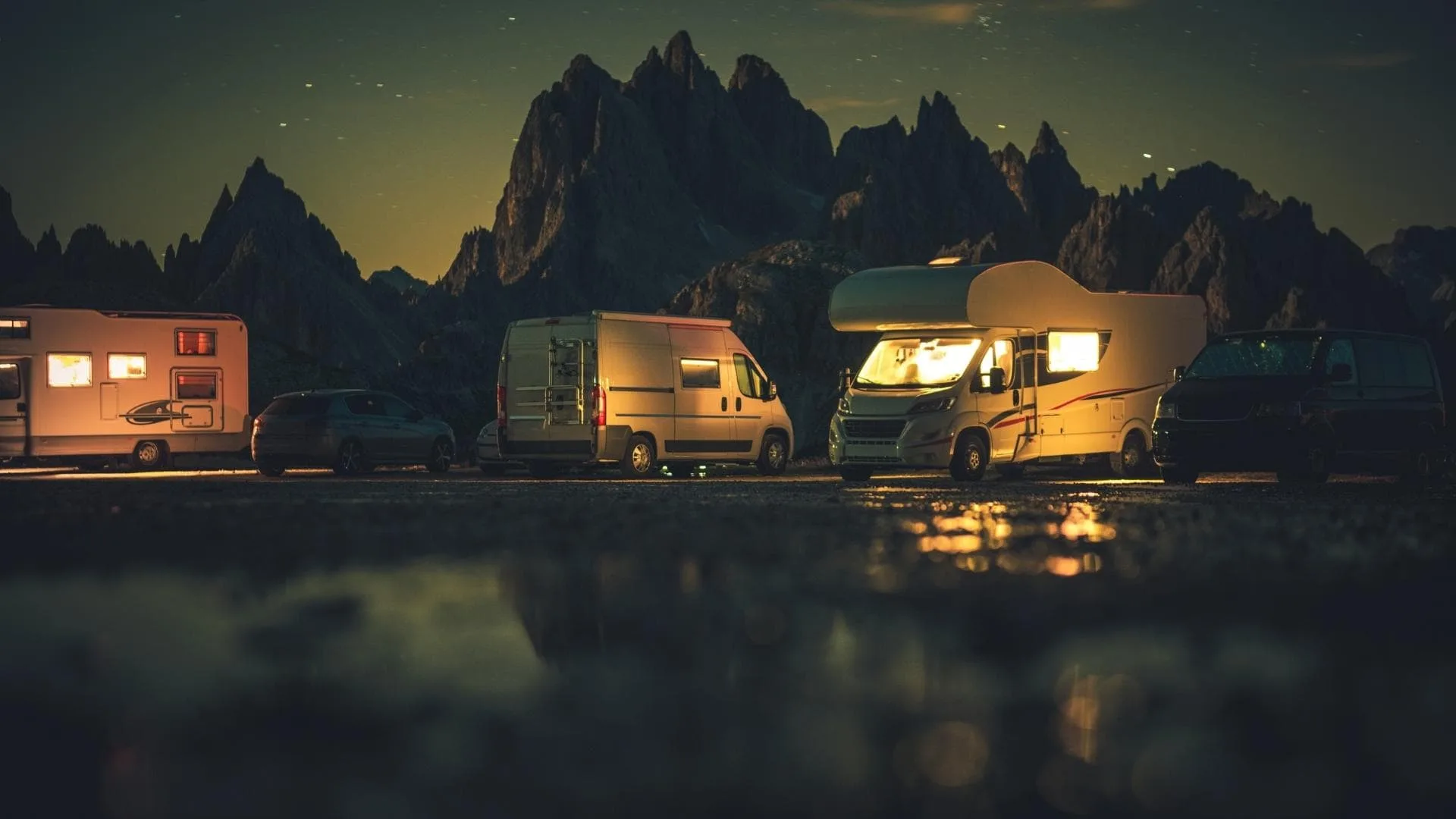
Generally speaking, the larger the RV, the larger the converter that will be needed to meet the DC loads drawn from lights, appliances, etc.
To determine the size RV power converter you need, check the 12V devices that you use regularly and take a note of the amperage rating of each appliance, device, etc. Consider especially the appliances you’ll be running together so that you’ll have an understanding of the amps you’ll be drawing at one time.
If your device(s) don’t list their current requirement in amps, but instead their power requirements in Watts, you can do some conversion.
Watts = Volts x Amps
So that means we can determine the amp draw of an appliance by inverting that equation to the following:
Amps = Watts ÷ Volts
As an example, if you had a device that reported that it used 100 Watts of power at 12V, you can calculate the number of amps it will require:
100 Watts ÷ 12V = 8.33 Amps
You’ll also need to consider the size of your battery bank and the type of batteries you have when determining the size of your RV power converter. A 100Ah battery requires at least 10 amps to charge effectively. So, if you have a 400 Ah battery bank, you’ll need a charger that can supply at least 40 amps. Don’t go too high, though. Supplying too great of a charging current can cause your batteries to “boil”, reducing their power output and lifespan.
However, lithium batteries charge at a higher rate, so a 100Ah lithium battery is capable of charging at between 50 and 100 amps (check your manufacturer’s recommendations). If you have a lithium battery bank, you’ll want a larger converter to take advantage of the faster charging. Plus, lithium batteries require different voltages for their charging stages, so a lithium-compatible converter/charger is required.
If you’re unfamiliar with the best approach to determining the best size and type of power converter for your RV, a quick call to the converter manufacturer will be very helpful.
And as always, if you’re uncomfortable working with electricity, call a pro. There may even be a mobile RV repair person nearby who can do the job for you.
Geek Out With Us Every Week
Join our newsletter to learn about all things RV-related. Every week we offer free tips, tricks, product reviews, and more to our online community of RVers. So, whether this is your first time on the road or you’re a seasoned expert, we’d love for you to geek out with us!



Steve at M4 LED
Friday 25th of March 2022
Another great detailed post. As we deal with electronic components at M4, namely LED lighting, I would add that even when on shore power, it is essential to have at least one good house battery in place even if you never boondock. The battery works as a buffer in the system to clean up the charger/converter power. If you have a bad battery installed, the charger sends even more power trying to charge a bad battery and that is also harsh on the rest of the system. I like to think that 12v accessories always run off the batteries, and the charger/converter keeps the batteries charged, Never use any kind of charger/converter in the absence of a battery connected to the system, or a failed battery connected to the system (this can cause runaway too). If using a standalone automotive battery charger in an emergency situation, charge the batteries with the electronics off (this includes not only LEDs, but radios and other devices) because the power that comes from those units is especially dirty when converted from AC to DC which is very hard on electronics.
TheRVgeeks
Friday 25th of March 2022
Excellent points, Steve. Thanks for adding them!